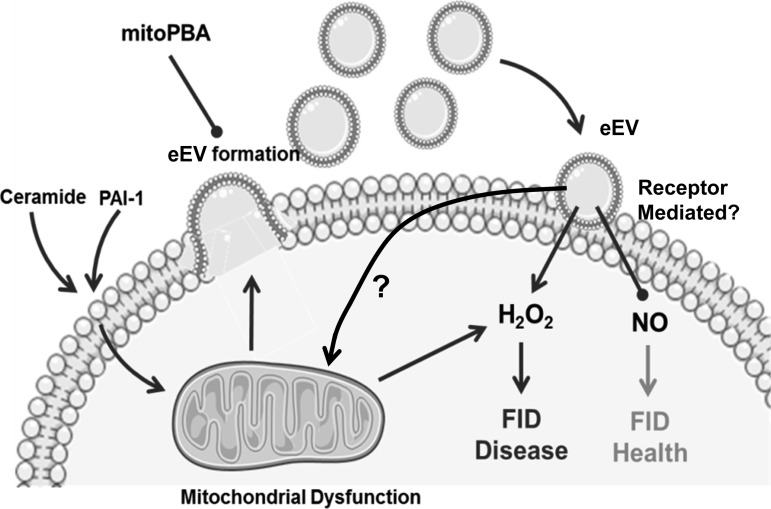Fig. 5.
Schematic diagram illustrating proposed mechanism of eEV-induced endothelial dysfunction. Exogenous ceramide and PAI-1 trigger formation of eEVs that is dependent on the generation of mitochondrial reactive oxygen species (ROS). Once formed eEVs can circulate throughout the vasculature and interact with downstream endothelium to initiate or contribute to the transition from NO to H2O2 as the primary mediator of FID. eEVs may be directly incorporated into the cell or may act through a cell membrane receptor. After endothelial cell interaction the eEV may increase mitochondrially derived H2O2 and replace NO as the mediator of FID. mitoPBA, mitochondria-targeted [93-boronophenyl)methyl]triphenyl-phosphonium.

